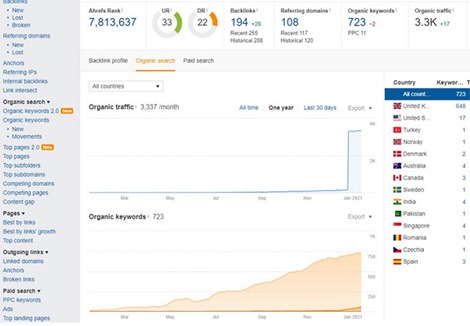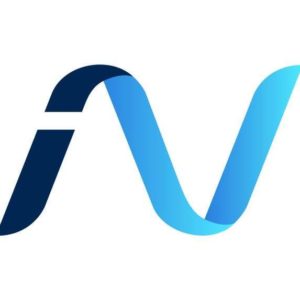
Inspiring Link Building Case Studies With Actionable Strategies for 2022
When people think of SEO, the first thought that pops into one’s mind is keyword optimization. While there is no doubt that the element is an integral part of SEO, it is not everything that matters. Another important factor is link building. In this article, we will explain link building case studies with actionable strategies for 2022.
In fact, according to Social Media Today, quality links are among the top-ranking factor of the Google algorithm. Yet, over 94 percent of the content online gets zero links!
Why does link building matter? Well, the more links your content has, the more authoritative and credible it is in the eyes of Google. This is why merely getting links is not important. Instead, you must strive to attract quality links so that you can leverage their credibility.
When it comes to building links, there is an array of strategies you can implement to best improve your chances of attaining backlinks. To understand the importance of each strategy, studying a relevant case study can be handy.
Inspiring Link Building Case Studies With Actionable Strategies for 2022
Here are some of the most successful case studies of link building that you can surely draw lessons out of.
Case Study #1: David Farkas’s Experimental Adventure
Rather than believing the link building case studies already shared by the various experts, David Farkas set out to gauge the effectiveness of link building via creating a website within the health niche.
The Beginning
After the development of the website, Farkas and the team went ahead to develop 26 pieces of pithy and highly optimized content over the course of six months. However, no promotion or link building efforts were made. You can say that the first six months were the “control” environment of the experiment.
After the first six months of content development, the team waited another six months to see whether the website will attract any traffic purely on the basis of quality content. Long story short, it didn’t.
The Next Step
After a year of barely any traffic, the team decided to begin its link building campaign. Each decision made was on the basis of the answers to two questions:
- Why would other websites want to link back to my website?
- What are content pieces within my website worthy of being linked to?
This helped the team in identifying what content is most valuable to its target audience. Since the website operating within the health niche, Farkas decided to leverage its specialty as a content attraction – an educational resource. This allowed the content to be precise, profound and hence helpful.
After creating linkable content, the SEO expert supplemented it with an extensive outreach campaign. Here, efforts were first made to search for authoritative and relevant websites that would ideally find the health-based website a linkable asset.
The Results
As a result of the link building efforts, the site witnessed a jump in organic traffic by a whopping 2000 percent! And the website now ranks on the first page for 2245 keywords. Here is a graph that best illustrates the outstanding result of the campaign.

Source: The Upper Ranks
Actionable Strategies to Learn
To sum it up, here are the link-building strategies you can learn from this case study.
- Develop valuable content that is linkable in nature.
- Leverage your specialty and your niche. Doing what you know best will ensure that you sound credible.
- Don’t underestimate the power of outreach. Do your research and email all relevant websites about linking back to your site.
Case Study #2: Chris Tzitzis’ Link Building Efforts for a Client Website
Chris Tzitzis, another SEO expert, helped further elevate the link-building efforts of a client website that functioned in the business/government niche.
The Beginning
Chris began by conducting a site audit of the website, which surprisingly showed promising results. He used one of the many available SEO tools for the audit, which highlighted that the website had:
- Simple yet clean backlinks, with links like directories, guest posts, and PBN.
- Main keyword ranking of page 6.
- Most backlinks that the website had were linking back to the homepage.
All in all, while the website had a long way to go for effective optimization, it was surely on the right track.
The Next Step
The budget allocated for the link building strategy was approximately $5,000. Since the website already had some basic links, during the first month, the SEO team focused on natural-ness building to make the site look more credible.
Content types included guest posts and niche edits. Again, all backlinks were directed to the homepage. This reaped favorable results in the first month. Therefore, the team decided to continue on the tactic to build relevance and authority of the homepage for the next three months.
In the fourth month, the team added other lesser authoritative links to the mix to help in diversifying the anchor profile – which at that point was mainly based on branded and URL anchors.
The Results

Source: Sir Links A Lot
By the end of five months, the site succeeded in gaining the number one rank for its primary keyword. Additionally, owing to the increase in its organic traffic, the site also achieved an overall SERP of number 1. Compared to other top rankers, the site achieved this feat with a lower quantity of links.
Actionable Strategies to Learn
The top strategies you can drive from this case study include:
- Focus on quality rather than quantity of backlinks.
- Diversify the type of links you attract to ensure that you cover all grounds.
- Linking back to the homepage is a great success that every website should strive for since it increases the chances of conversion.
Case Study #3: Pat Ahren Prodding a B2B Towards Success
After researching the various SaaS SEO agencies, a hosting provider ended up knocking on the doors of Pat Ahren and his team. The brand was struggling to assert its online presence and uniqueness in the face of competitors like HostGator and GoDaddy.
The Beginning
Working with a minimal budget and within a highly competitive industry, Pat Ahren surely felt that the odds were against him. However, he and his team still succeeded in improving the online presence of one of its clients.
The SEO team began by conducting competitive research, which unearthed a content marketing opportunity for the B2B website. A lot of its target audience, over 10,000 to be exact, were looking for information regarding DDoS attacks.
Ahren took this as a clue to shift the main keyword from a general phrase like “web hosting” to a specific phrase like “secure web hosting”. After doing so, it optimized the website’s content accordingly and moved on to creating relevant premium content—this laid ground for their link acquisition techniques
The Next Step
After optimizing the content of the website, the experts began building links to boost the backlink profile of the B2B website.
The prime focus of the link-building campaign was on guest posting. The writers of the team wrote valuable content for various authoritative websites and blogs to acquire high-quality backlinks that the team could control.
To establish authority as a secure web hosting provider, the team used tools like SEMRush and Ahrefs to identify potential content topics pertaining to DDoS protection. The tools also came in handy in detecting other links that wrote credible articles on the topic.
Over 1000 authoritative websites were shortlisted, and a relevant premium article about DDoS security on the B2B website was shared with each of the bloggers. Those who responded with praise were encouraged to link back to the content.
The Results
By promoting a single premium article to over 1000 bloggers, the B2B website was able to attract over 43 backlinks from a total of 15 different sites. This figure does not take into account the numerous social media shares of the content received.

Source: Inter Growth
Now, the premium article is one of the highest performing pages of the website, with over 700 readers a month! It also increased the average time spent on the website to four minutes.
The campaign ran for three months and increased the organic traffic by over 55 percent.
Actionable Strategies to Learn
You might think that this case study doesn’t teach us any actionable strategy we haven’t already discussed. Well, read it again! There is a very important insight that we learn from this case study.
And that is the power of finding your unique positioning and then altering your link building efforts around it. Rather than targeting all websites for link building, these experts focused on only those that dealt with online security – thereby ensuring that the target audience of their website aligned with that of the guest posting platform.
Additionally, it also showcases how in case of a lack of budget, you can easily improve your links via one premium piece of content, a handy SEO tool, and dedicated outreach efforts.
Now It’s Your Turn!
Are you inspired by the three starkly different yet successful case studies? Gain insights from these stories and use their tried and tested actionable strategies to improve your link-building efforts.
Who knows, maybe by the end of this year, your website would be the next case study every SEO expert would be raving about. Till then, keep building links or explore our best SEO agencies for startups if you’re looking for one. You can also read our Guide On Above The Line VS Below The Line Marketing.


























